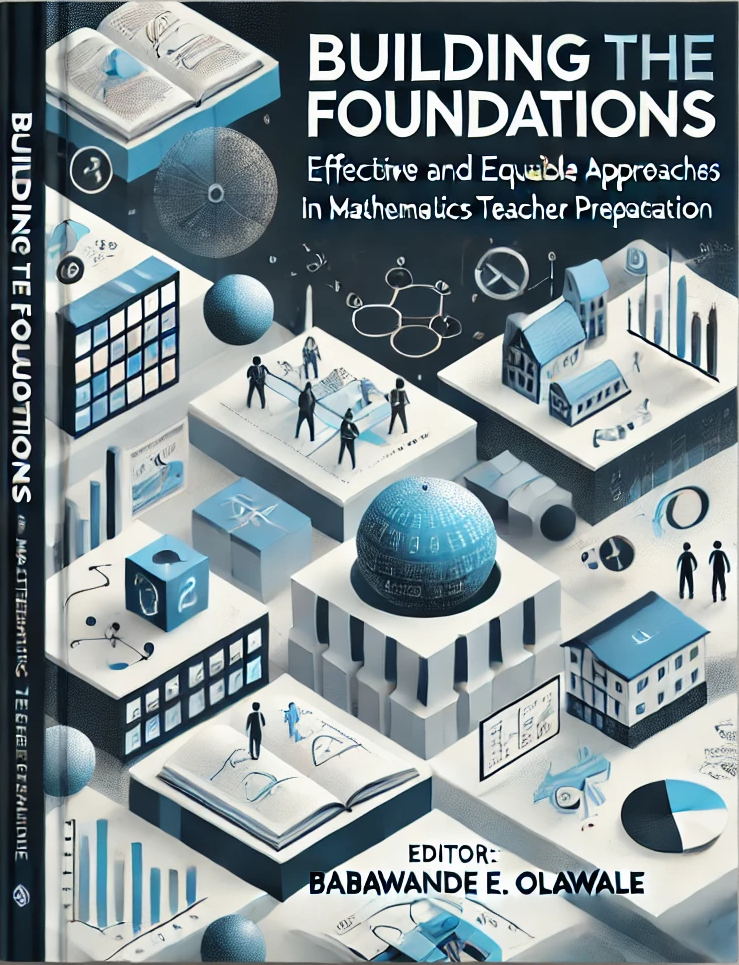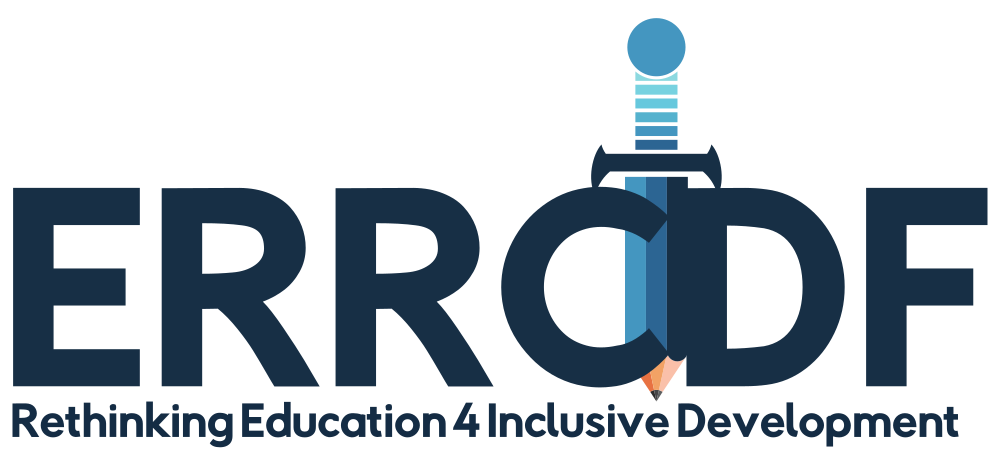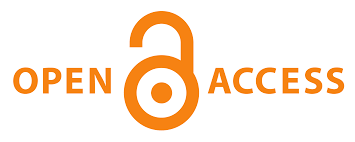Conceptual foundation for ethnomathematics instructional design in mathematics teacher preparation
DOI:
https://doi.org/10.38140/obp3-2025-10Keywords:
Digital content management, ethnomathematics, global competence, instructional design, mathematics teacher preparationAbstract
Preparing mathematics teachers who can deliver the change we are witnessing and meet the needs of the future requires a concerted effort from all stakeholders in the mathematics education ecosystem. Such efforts must take into account the mediating role of culture-based instructional design in addressing the varying needs of indigenous communities, digital technology users, proposals from early adopters, and the expanding range of opportunities provided by new and future digital technologies. Culture-based educational enhancements depend on how well researchers’ and designers’ interventions satisfy end-users and the educational and interactional effects the designed tools necessitate. On this basis, this chapter presents a conceptual foundation for ethnomathematics instructional design in mathematics education by first elaborating on the concept of ethnomathematics and the framework for realistic mathematics education. This is followed by a focus on the role of ethnomathematics in mathematics teacher preparation, alongside research-based contextual deployments of culture-based mathematics instructional design. The details of digital content management in instructional environments are then considered, followed by a presentation of empirical case studies of instructional design in teacher preparation. The conceptual presentation in this chapter aims to encourage researchers and practitioners in the field of Mathematics Education to explore the full opportunities and benefits of ethnomathematics instructional design.
References
Abah, J. A. (2024). Structural quality assessment of the villagemath instructional content platform. Journal of Advanced Sciences and Mathematics Education, 4(1), 1-14. https://doi.org/10.58524/jasme.v4i1.349
Abah, J. A., & Chinaka, T. W. (2024). Conceptualization and Development of a Web-based Platform for Multicultural Mathematics Resources. Research in Educational Policy and Management, 6(2), 256-280. https://doi.org/10.46303/repam.2024.34
Abah, J. A., Iji, C. O. & Abakpa, B. O. (2018). Blown Away in the Wind of Change: Can Extinct School Folktales be awakened through Mathematics Storytelling in Nigerian Basic Education? International Journal on Emerging Mathematics Education (IJEME), 2(2), 165-178. http://journal.uad.ac.id/index.php/IJEME/article/download/10561/pdf_28
Abah, J. A., Iji, C. O., Abakpa, B. O. & Anyagh, P. I. (2021). Design, Implementation and Assessment of a Web-Based Ethnomathematics Instructional Content Repository for Pre-Service and In-Service Mathematics Teachers in Benue State, Nigeria. Journal of Mathematics and Science Teacher, 1(1), em002. https://doi.org/10.29333/mathsciteacher/11075
Barkatsas, A. (2004). A new scale for monitoring students’ attitude for learning mathematics with technology. Melbourne: St. Joseph’s College. pp 1-8.
Best, J. & Dunlap, A. (2013). Native culture and language education: Addressing the interests of special populations within US Federal policy. Forum Briefing Materials: Culturally Based education for Indigenous Language and Culture. pp 5-8. Rapid City, South Dakota: REL Project, US Department of Education Institute of Educational Sciences.
Beswick, K. & Goss, M. (2018). Mathematics teacher educator knowledge: What do we know and where to from here? Journal of Mathematics Teacher Education, 21, 417-427.
Changiz, T., Haghani, F. & Masoomi, R. (2012). Design and implementation of web directory for medical education (WDME): A tool to facilitate research in medical education. MED ARH, 66(2), 133-136. https://doi.org/10.5455/medarh.2012.66.133-136
Charles, A. O. & Babatunde, I. G. (2014). Design and implementation of a web-based virtual classroom system. IOSR Journal of Research & Method in Education, 4(3), VII, 68-77.
CUNY (2003). Final report: Handbook on contextualized learning. New York, NY: Division of Adult and Continuing Education, Office of Academic Affairs, City University of New York.
Cywin, A. J., Ferrar, J., Russo, T., Maucione, J. C., Confar, D., McNeil, C., Sylvain, M., Pacheco, S., & Gatenby, D. (2011). Digital asset management team report. Dartmouth: University of Massachusetts.
D’Ambrosio, U. (1987). Reflections on ethnomathematics. International Study Group on Ethnomathematics Newsletter, 3(1).
D’Ambrosio, U. (1994). Cultural framing of mathematics teaching and learning. In R. Biehler, R. W. Scholz, R. Straber & B. Winkelmann (Eds.), Didactics of Mathematics as a Scientific Discipline, 443-455.
D’Ambrosio, U. (2001a). Ethnomathematics: Link between traditions and modernity. Rotterdam: Sense Publisher Publishers.
D’Ambrosio, U. (2001b). What is ethnomathematics, and how can it help children in schools? Teaching Children Mathematics, 7(6), 308.
Dede, C. (2014). The role of digital technologies in deeper learning. Student at the Center: Deeper Learning Research Series. Jobs for the Future.
Easterday, M. W., Lewis, D. R. & Gerber, E. M. (2014). Design-based research process: Problems, phases, and applications. Learning and Becoming in Practice. The International Conference of the Learning Science (ICLS) 2014, Proceedings Volume 1, 317-324.
Ebby, C., Lim, V., Reinke, L., Remillard, J., Magee, E., Hoe, N., & Cyrus, M. (2011). Community based mathematics project: Conceptualizing access through locally relevant mathematics curricula. Perspectives on Urban Education, Spring 2011, 11-18.
Elliot, T., Kay, M. & LaPlante, M. (2016). Digital transformation in higher education: How content management technologies and practices are evolving in the era of experience management. New York, NY: Digital Clarity Group. pp. 1-35.
Epper, R. M., & Baker, E. D. (2009). Technology solutions for developmental math: An overview of current and emerging practices. Journal of Developmental Education, 26(2), 4-23.
Extensis (2018). Digital asset management best practices guide. Extensis.
Ezeife, A. N. (2011). A cultural and environmental spin to mathematics education: Research implementation experience in a Canadian aboriginal community. First Nations Perspectives, 4(1), 2-39.
Fenyvesi, K., Koskimaa, R., & Lavicza, Z. (2014). Experiential education of mathematics: Art and games for digital natives. Kasvatus & Aika, 9(1), 107-134.
Fenyvesi, K., Koskimaa, R. & Lavicza, Z. (2014). Experiential education of mathematics: Art and games for digital natives. Kasvatus & Aika, 9(1), 107-134.
Fouze, A. Q., & Amit, M. (2018). Development of mathematical thinking through integration of ethnomathematics folklore game in math instruction. Eurasia Journal of Mathematics, Science and Technology Education, 14(2), 617-630.
Francois, K., Mafra, J. R., Fantinato, M. C., & Vandendriessche, E. (2018). Local mathematics education: The implementation of local mathematics practices into the mathematics curriculum. Philosophy of Mathematics Education Journal, 33, 1–18.
Freudenthal, H. (1968). Why to teach mathematics so as to be useful. Education Studies in Mathematics, 1, 3–8.
Freudenthal, H. (1971). Geometry between the devil and the deep sea. Educational Studies in Mathematics, 3, 413–435.
Freudenthal, H. (1973). Mathematics as an educational task. Dordrecht: Reidel Publishing.
Freudenthal, H. (1991). Revisiting mathematics education. China lectures. Dordrecht: Kluwer.
Frey, F., Williams-Allen, S., Vogl, H., & Chandra, L. (2005). Digital asset management: A closer look at the literature. Rochester, NY: Printing Industry Center, RIT. pp. 1–44.
Ghirardini, B. (2011). E-learning methodologies: A guide for designing and developing e-learning courses. Rome: Food and Agricultural Organization of the United Nations. pp. 1–138.
Gravemeijer, K. (2008). RME theory and mathematics teacher education. In D. Tirosh & T. Wood (Eds.), Tools and processes in mathematics teacher education (pp. 283–302). Boston, CT: Sense Publishers.
Gravemeijer, K., Stephan, M., Julie, C., Lin, F.-L., & Ohtani, M. (2017). What mathematics education may prepare students for the society of the future? International Journal of Science and Mathematics Education, 15 (Suppl. 1), S105–S123.
Hsu, T.-Y., Ke, H.-R., & Yang, W.-P. (2006). Unified knowledge-based content management for digital archives in museums. The Electronic Library, 24(1), 38–50. https://doi.org/10.1108/02640470610649236
Iji, C. O., & Abah, J. A. (2019). Internet skills as a measure of digital inclusion among mathematics education students: Implications for sustainable human capital development in Nigeria. International Journal of Education and Knowledge Management (IJEKM), 2(1), 1–16. https://rpajournals.com/wp-content/uploads/2019/02/IJEKM-01-2019-06.pdf
Iji, C. O., Abah, J. A., & Anyor, J. W. (2018). Educational cloud services and the mathematics confidence, affective engagement, and behavioural engagement of mathematics education students in public universities in Benue State, Nigeria. International Journal of Teaching and Learning in Higher Education, 30(1), 47–60. http://www.isetl.org/ijtlhe/articleView.cfm?id=2825
Iji, C. O., Abah, J. A., & Anyor, J. W. (2017). Impact of cloud services on students’ attitudes towards mathematics education in public universities in Benue State, Nigeria. International Journal of Research in Education and Science (IJRES), 3(1), 228–244. http://dergipark.ulakbim.gov.tr/ijres/article/download/5000202010/5000179858
Iversen, E., & Jonsdottir, G. (2018). A bit more than a fly on the wall: Roles and responsibilities in design-based research. Designs for Learning, 10(1), 18–28. https://doi.org/10.16993/dfl.79
Jacob, M. M., Sabzalian, L., Jansen, J., Tobin, T. J., Vincent, C. G., & Lachance, K. M. (2018). The gift of education: How indigenous knowledges can transform the future of public education. International Journal of Multicultural Education, 20(1), 157–185.
Kanaiaupuni, S. (2007). A brief overview of culture-based education: An annotated bibliography. Kamehameha Schools Research and Evaluation Division.
Katmada, A., Mavridis, A., & Tsiatsos, T. (2014). Implementing a game for supporting learning in mathematics. Electronic Journal of e-Learning, 12(3), 230–242.
Kilpatrick, J., & Findell, B. (2001). Adding it up: Helping children learn mathematics. Washington, D. C.: National Academy Press.
Longview Foundation. (2008). Teacher preparation for the global age: The imperative for change. Longview Foundation for Education in World Affairs and International Understanding, Inc.
Masoumi, D., & Lindstrom, B. (2009). Foundations of cultural design in e-learning. International Journal of Internet and Enterprise Management, 6, 124–142. https://doi.org/10.1504/IJIEM.2009.023926
Mncube, V., & Olawale, E. (2020). Exploring readiness of South African universities for the Fourth Industrial Revolution. InEDULEARN20 Proceedings(pp. 8989–8995). IATED.
Mosimege, M. (2004). Indigenous mathematical knowledge at South African cultural villages: Opportunities for integration in mathematics classrooms. Retrieved 1 November 2018 from http://citeseerx.ist.psu/viewdoc/download?doi=10.1.1.577.1920&rep=rep1&type=pdf
Neel, K. S. (2010). Ability to learn mathematics for Aboriginal students increases if the context, personal and cultural relevance are meaningful. Paper presented at the AARE Annual Conference, Melbourne, Australia. Paper Code 1779.
Nouri, J., Spikol, D., & Cerratto-Pargman, T. (2016). A learning activity design framework for supporting mobile learning. Designs for Learning, 8(1), 1–12. https://doi.org/10.16993/dfl.67
Prensky, M. (2001). Digital natives: Digital immigrants – part 1. On the Horizon, 9(5), 1–6. https://doi.org/10.1108/10748120110424816
Richey, R. C., Klein, J. D., & Nelson, W. A. (2004). Developmental research: Studies of instructional design and development. In D. Jonassen (Ed.), Handbook of research for educational communications and technology (2nd ed., pp. 1099–1130). Mahwah, NJ: Lawrence Erlbaum Associates Inc.
Rosa, M., & Orey, D. (2010). Ethnomodeling as a pedagogical tool for the ethnomathematics program. Revista Latinoamericana de Ethnomathematica, 3(2), 14–23.
Rosa, M., & Shirley, L. (2016). Introduction. In G. Kaiser (Ed.), Current and future perspectives of ethnomathematics as a program. ICME-13 Topical Surveys (pp. 1–4). Switzerland: Springer. https://doi.org/10.1007/978-3-319-30120-4_3
State Educational Technology Directors Association (SETDA). (2015). Ensuring the quality of digital content for learning: Recommendations for K–12 education. Retrieved 21 October 2018, from https://www.setda.org/wp-content/uploads/2015/03/Digital_brief_3.10.15c.pdf
The Design-Based Research Collective. (2003). Design-based research: An emerging paradigm for educational inquiry. Educational Researcher, 32(1), 5–8.
Vainio, T., Walsh, T., & Varsaluoma, J. (2014). Cross-cultural design of mobile mathematics learning for South African schools. IADIS International Journal on WWW/Internet, 12(1), 81–93.
Van den Heuvel-Panhuizen, M. (2003). The didactical use of models in realistic mathematics education: An example from a longitudinal trajectory on percentage. Educational Studies in Mathematics, 54, 9–35.
Van den Heuvel-Panhuizen, M., & Drijvers, P. (2014). Realistic mathematics education. In S. Lerman (Ed.), Encyclopedia of mathematics education. Dordrecht: Springer Science and Business Media. https://doi.org/10.1007/978-94-007-4978-8
Wang, P. S., Zhou, Y., & Zou, X. (2004). Web-based mathematics education: MeML design and implementation. Proceedings of the Conference on Information Technology: Coding and Computing, 1, 169–175.
Downloads
Published
Issue
Section
License
Copyright (c) 2025 Joshua Abah Abah

This work is licensed under a Creative Commons Attribution 4.0 International License.









